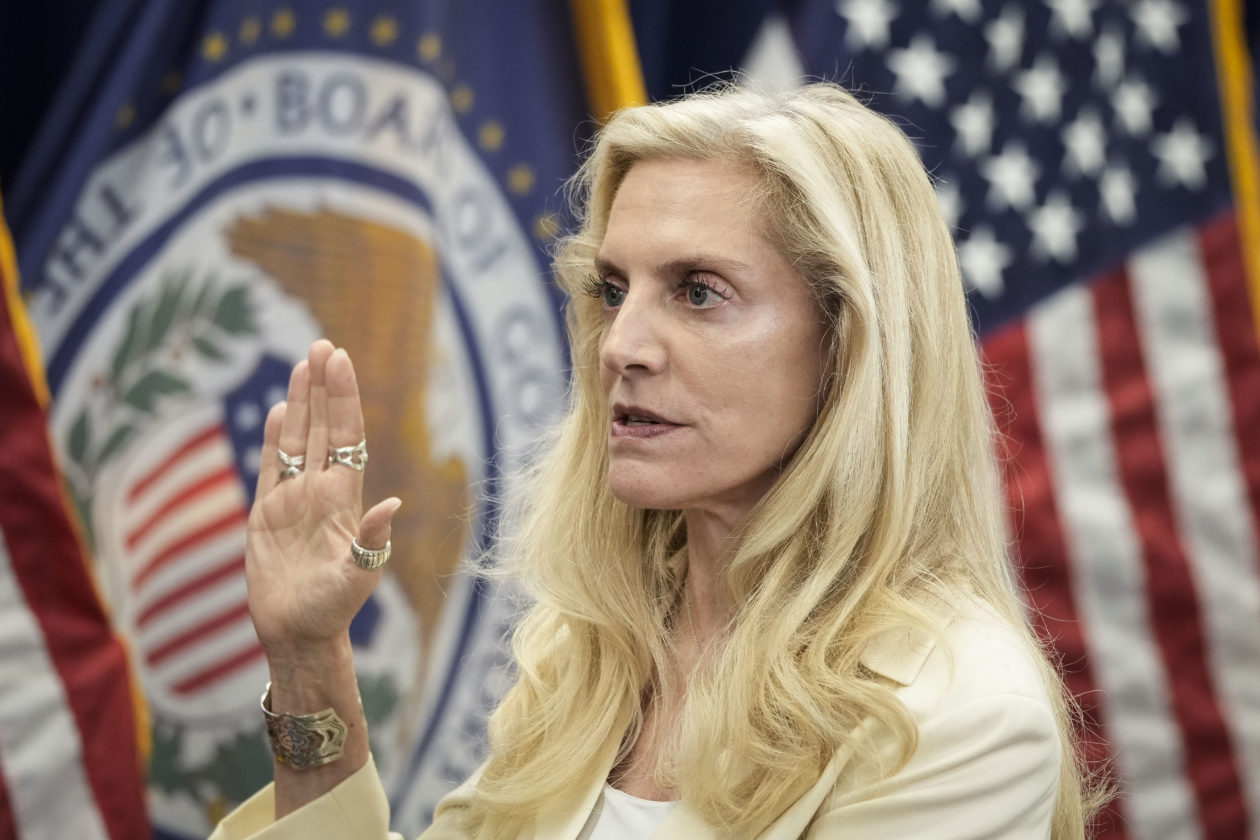The U.S. Federal Reserve and crypto markets rarely see things in the same light, but on one important development — the elevation of Lael Brainard to Fed vice chair, or second-in-command of the most important central bank in the world — both may have an opportunity to benefit.
Critically, on the position’s traditional demands, Brainard is highly qualified. By all accounts, she is well-regarded, smart, thoughtful and importantly, she understands the intricacies of and risks in the financial system. Although deemed by some market participants as a “dove” — an official who consistently advocates for lower rates and more stimulus than their “hawkish” colleagues — all else equal, her policy record does not differ significantly from the centrist views of Fed Chair Jerome Powell.
So what makes her unique amongst those at the very top of the global financial system? A special focus on innovation, inclusion, payments, and yes — on crypto. Brainard has shown that she’s been ahead of the curve over the past few years at the Fed, and has stated that she will continue to press for innovation and responsible development in private industry. “The Federal Reserve has operated alongside the private sector, providing a stable currency and operating key aspects of the payments system, while also supporting private-sector innovation,” Brainard recently said to the House Financial Services Committee. “The rapid ongoing evolution of the digital financial system at the national and international levels should lead us to frame the question not as whether there is a need for a central-bank-issued digital dollar today, but rather whether there may be conditions in the future that may give rise to such a need.”
Indeed, as policymakers in Washington D.C. have recently come to realize, the U.S. being a global center of financial innovation creates jobs and helps reinforce the U.S. dollar as the world’s most important reserve currency, digital or otherwise. From U.S. policymakers’ perspectives, the “exorbitant privilege” conveyed through a dominant reserve currency should be guarded as a competitive strength.
Brainard will now have a unique opportunity to bridge important gaps, both real and perceived, and help foster a healthier debate on the merits of crypto broadly and of central bank digital currencies (CBDCs) specifically. The challenges are not insignificant. Deep skepticism of crypto lies among traditionalists, including at central banks and other important financial institutions. For instance, European Central Bank President Christine Lagarde recently offered pointed criticism of the crypto industry and its risks, saying “it is worth nothing” and is without an anchor of safety. Brainard herself in earlier years noted that crypto has “no trusted institution standing behind it” and can exhibit extreme volatility.
The recent Terra debacle, which mirrored similar traditional finance (TradFi) events in the past, gave more ammunition to critics. Other officials have been downright hostile toward the digital asset industry from the outset, despite its promise of inclusion and the benefits of innovation. Crypto enthusiasts can be even more sharp-elbowed in their cynicism toward any elements of TradFi, with some arguing that the TradFi system is broken beyond repair. Unfortunately, tribalism has spread into this debate now as well, with innovation advocates and status quo clingers each having settled into their own camps.
However, there is common ground and much that stakeholders across the spectrum can learn from each other. As Fed vice chair, Brainard is in a position to advocate for a healthy symbiotic relationship between government, the independent central bank, and the innovative private sector. She has spoken regularly on crypto and on the merits and risks that ancillary innovations like decentralized finance (DeFi) are bringing to market. The Fed itself, typically slow and methodical, is quickening its pace of research in digital payments, disintermediation and CBDC design. Brainard has noted that the Boston Fed “is collaborating with researchers at MIT in a multiyear effort to build and test a hypothetical digital currency oriented to central bank uses.” Moreover, new payment tech is finally being operationalized within the Fed, without crowding out private sector innovation. For instance, the Fed intends to operate its new retail real-time gross settlement system, FedNow, starting in 2023, noting that it will “operate alongside private-sector real-time gross settlement services for instant payments.” Moreover, the Fed isn’t alone in payments and CBDC research. The European Central Bank, Bank of England, Bank of Japan and Bank for International Settlements all have dedicated resources and effort to the area.
The digital asset industry needs more serious-minded advocates in positions of power and trust. To date, Brainard has been cautious but has shown an increasing optimism toward crypto. Going forward, she has an opportunity to wholeheartedly push back on vested interests that have not served the public interest well. That includes more directly addressing holdouts within government trying to protect the status quo as well as stodgy financial firms jealously shielding their rent-seeking business models.
Support from central bank leaders will inspire more responsible development while acknowledging that innovation is messy, non-linear and absolutely essential to a well-functioning economy. It’s been said before that crypto would benefit by having more “adults in the room” as its champions — this is Brainard’s opportunity.
The Fed, too, stands to benefit as it will show the public that a tradition-minded institution nearly 110 years old can still thoughtfully adapt to change and reflect the mindset of the people that it serves. To date, the pace has been slow, since skepticism is natural for policymakers who tend to be more evidence-based and outcome-oriented. However, moving the Fed toward supporting a “stakeholder economy” with broad-based growth aligns well with the utopian goals of many in the crypto community. An effective digital dollar, functioning alongside private crypto assets, would assuage concerns about transmitting monetary policy effectively while still achieving broad policy goals. “It is important for the United States to play a lead role in the development of standards governing international digital finance transactions involving CBDCs consistent with the norms of privacy, accessibility, interoperability, and security,” Brainard has said.
Though it would be years away, some in traditional finance, in the government, and even, ironically, in crypto itself fear and will resist a CBDC or any involvement of the Fed in crypto. We can expect to hear speculation of dystopian outcomes and a new surveillance mechanism for centralized authorities to wield against the ordinary people. On privacy, these concerns have some merit, and it’s yet to be addressed how to create a CBDC that’s privacy-centric. Any potential CBDC must be carefully designed, thoughtfully implemented, and take into account legitimate issues of overreach. That said, policymakers should not be dissuaded by disingenuous claims that are actually meant to protect incumbents. Nor should the crypto industry accept a solution that is simply the status quo disguised as change.
Over the past few years, numerous intelligent and driven professionals have moved from traditional finance to crypto because they see a once-in-a-generation opportunity to positively influence, if not remake altogether, the financial system. The promise is for a fairer, more transparent, more resilient and better financial system, though that change could still be a long way off. In the meantime, the Fed has an important role to play in helping to advocate for private sector innovation and collaboration, including in crypto. Lael Brainard should seize this opportunity.





